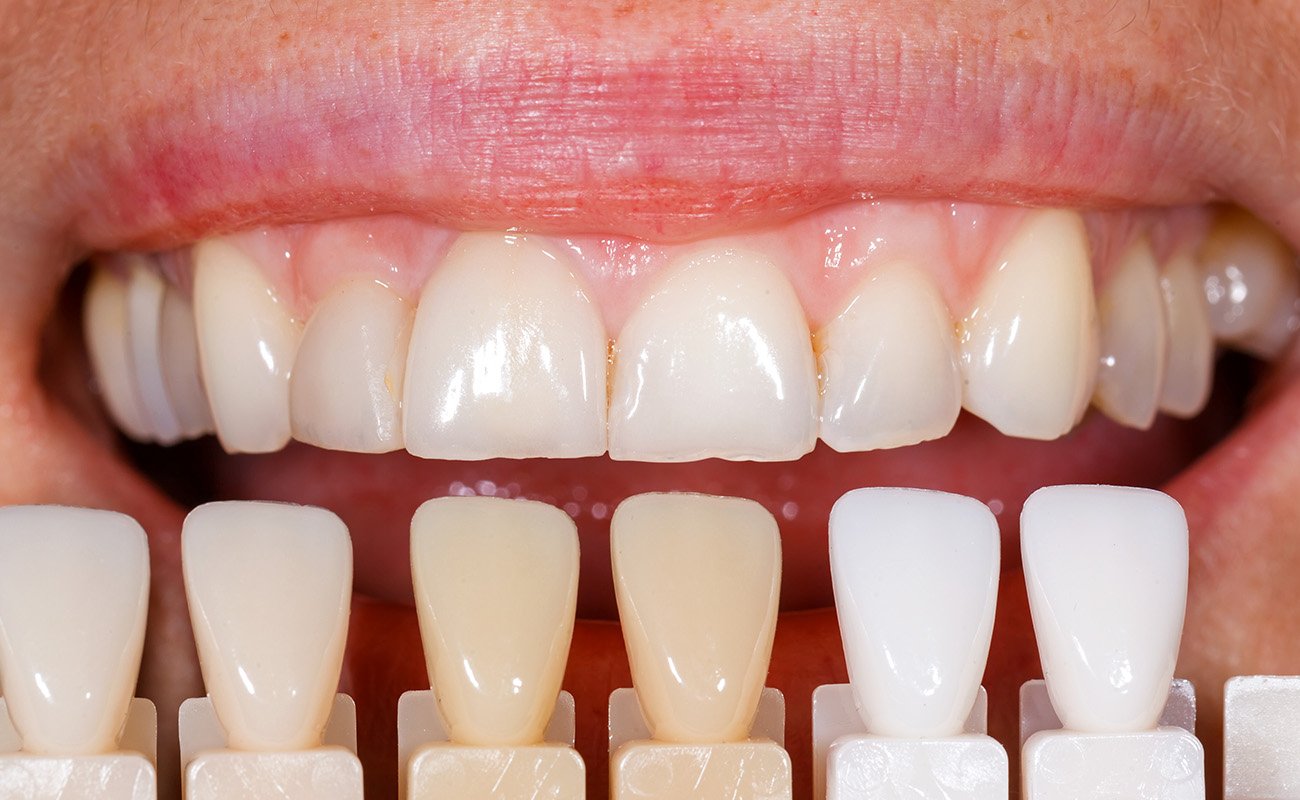Porcelain veneers are thin, custom-made shells designed to cover the front surface of teeth, enhancing their appearance. They are used to address cosmetic dental issues such as gaps, chips, cracks, stains, unevenness, discoloration, and misalignment.
The cost of porcelain veneers can vary depending on factors such as the number of teeth involved and the dentist’s expertise. However, they are generally more expensive than other veneer options due to their superior durability, longevity, and aesthetics.
Factors Contributing to High Cost of Porcelain Veneers
Expertise of Dental Professionals
Dentists who specialize in veneers often have extensive training, skills, and experience, which justifies the high fees charged for their services. The high level of craftsmanship involved in creating a perfect smile demands precision and an eye for detail.
Quality of the Material
Porcelain, a common material for veneers, has a higher price point. Its popularity stems from its durability, lifespan, and its close resemblance to natural teeth, especially when compared to other materials like composite.
See also: Can You Put Braces on Veneers?
Cost of Customization
Veneers are tailored to fit the specific dental structure of each person. This detailed customization process increases the overall treatment cost.
Tooth Preparation
A small portion of tooth enamel is removed before placing a veneer. This procedure, requiring careful technique, contributes to the overall expense.
Installation Process
The veneer placement, polishing, and adjustment is a labor-intensive process that requires a significant amount of time and expertise from the dental professional.
Operational Costs of Dental Clinics
Finally, the operational costs of dental clinics, such as facility upkeep, staff salaries, and equipment maintenance, contribute to the high cost of veneers.
Cost of Veneers and Insurance Coverage
According to Advanced Smile Dentistry, the cost of porcelain veneers usually ranges from $800 to $2,500 per tooth. The cost varies depending on the location and the practitioner. In some states like Los Angeles, the price may be higher due to differences in the cost of living and dental services. Additionally, the experience level of the practitioner may also impact the cost of placing veneers.
Dental insurance often does not cover veneers as they are viewed as cosmetic procedures. However, insurance may partially cover the cost if there is a legitimate medical reason for the veneers. If insurance does not provide coverage, patients can explore other payment methods such as dental savings plans, payment plans, or dental care financing options.
Alternatives to Porcelain Veneers
Porcelain veneers can beautifully transform smiles, but the treatment can be prohibitively expensive. For patients seeking a less costly way to improve the appearance of their teeth, there are several alternatives to consider.
See also: Veneers That Look Natural: Achieving a Seamless Smile in Dentistry
Composite Veneers
Composite veneers are an economical option compared to porcelain veneers as their cost range from $250 to $1,500 on average. Made from the same resin-based material as tooth-colored fillings, composite veneers match the natural teeth well. Although they aren’t as durable as porcelain, they can address dental concerns like discoloration, minor chips, or gaps.
Lumineers
Lumineers are ultra-thin porcelain veneers that require little to no tooth preparation. They can be a less invasive option for improving the appearance of teeth while maintaining tooth structure. They are typically priced between $800 to $2,500.
Snap-on Veneers
Snap-on veneers are removable and non-invasive dental appliances that cover the teeth, creating the facade of a perfect smile. They can be a temporary and less expensive solution for hiding gaps, missing teeth, or discoloration. Their price starts at $30.
Worth Knowing
According to the report prepared by Grand View Research, the global dental veneers market size was valued at USD 2.1 billion in 2021.
Dental Crowns
Dental crowns are restorations that cover the entire visible portion of a tooth. They can be an alternative to veneers for treating more severe dental issues such as broken or severely discolored teeth. Their cost usually ranges from $500 to $3,000 per tooth.
Dental Bonding
Dental bonding involves applying a tooth-colored resin to the teeth and sculpting it to the desired shape. It is a less costly alternative to veneers for addressing minor cosmetic issues such as chips or discoloration. According to Envy Smile Dental Spa, The average cost of dental bonding is around $300 to $600 per tooth.
Teeth Whitening
Teeth whitening procedures can help brighten teeth and remove stains. This option may be suitable for those seeking a simpler, less invasive, and more affordable method to enhance their smile. In-office whitening typically costs between $200 to $1,000 per session.
Clear Aligners
Clear aligners are a series of custom-made plastic trays that gradually straighten teeth. They can be a suitable alternative to veneers for correcting misaligned teeth or gaps. The cost of at-home aligners starts from $1,000.
While clear aligners are available for purchase online, it’s important to ensure you’re dealing with reputable and registered companies. Here is a selection of companies to help you with your selection.

Byte
An affordable option with refundable impression kits, free HyperByte, and a Byte for Life guarantee.
Check out Byte Aligners
AlignerCo
The cheapest at-home aligners, with monthly plans, no down payment, and considerable discounts.
Check out AlignerCo Aligners
Candid
A hybrid of in-office and at-home treatment that provides 1-on-1 orthodontist support.
Check out Candid AlignersWhy Are Veneers Expensive?
In conclusion, the high cost of porcelain veneers can be attributed to several key factors, including the expertise of dental professionals, the quality and durability of the material, the detailed customization process, and the careful tooth preparation required. Despite the expense, porcelain veneers remain a popular choice for those seeking to improve their smile due to their superior aesthetics and longevity compared to other options.
For people concerned about the cost, there are several alternatives such as composite veneers, Lumineers, snap-on veneers, dental crowns, dental bonding, teeth whitening, and clear aligners, each offering its own benefits and cost considerations. Ultimately, the decision to invest in porcelain veneers or explore other options will depend on an individual’s specific dental needs, aesthetic goals, and budget constraints.
Frequently Asked Questions
What factors contribute to the high cost of veneers?
The high cost of veneers can be attributed to several factors, such as the material used, the expertise of the dental professional performing the procedure, and the complexity of the patient’s condition. Additionally, dental lab fees and overhead costs for dental offices contribute to the overall price.
How does the price of veneers vary by location?
The price of veneers can vary significantly depending on the location. In urban areas and cities with high costs of living, dental services tend to be more expensive, whereas in rural areas or smaller cities, the cost may be lower.
Can insurance cover the cost of veneers?
Insurance may partially cover the cost of veneers, but it depends on the individual insurance plan and the specific requirements for coverage. Generally, veneers are considered a cosmetic procedure, making it more difficult to secure coverage. If you are thinking about veneers discuss your treatment plan with your insurance provider to understand potential coverage details.
What is the price difference between a full set of veneers and individual veneers?
The price difference between a full set of veneers and individual veneers can vary widely based on factors like the number of teeth involved and the complexity of the case. On average, individual veneers may cost between $700 to $2,500 per tooth, while a full set of veneers, typically covering 6 to 10 upper front teeth, can range from $5,000 to $15,000 or more. Costs may vary depending on geographic location, the materials used, and the dentist’s fees.
Are veneers worth the money?
Whether veneers are worth the money depends on individual preferences and circumstances. While veneers can be an expensive investment, they may be worth considering for some patients unhappy with the look of their teeth. Veneers can cover chips, gaps, stains, and other imperfections to create a beautiful smile. The thin porcelain covers look and feel natural. They are durable and can last for many years, which can justify their cost for those seeking long-term aesthetic enhancement.
Why are veneers so expensive in America?
Several factors contribute to the high cost of veneers in America. First, the materials used, such as high-quality porcelain, are expensive. Second, the labor-intensive process of customizing, fitting, and bonding veneers requires skilled professionals. Additionally, dental fees, laboratory costs, and overhead expenses vary by location, impacting the overall price. Lastly, the demand for cosmetic dentistry in the U.S. drives prices up.
How long do veneers last?
Veneers typically last between 10 to 15 years, although their lifespan can vary depending on factors such as your oral hygiene practices, diet, and overall dental health. Proper care, including regular dental check-ups and avoiding habits like teeth grinding or biting hard objects, can extend their durability.
Sources
Meer Rownaq Ali, A. B., Conventional Versus Minimally Invasive Veneers: A Systematic Review, Cureus. 2023. DOI: 10.7759/cureus.44638. Available online at: https://www.ncbi.nlm.nih.gov/pmc/articles/PMC10548404/
https://www.grandviewresearch.com/industry-analysis/dental-veneers-market-report

